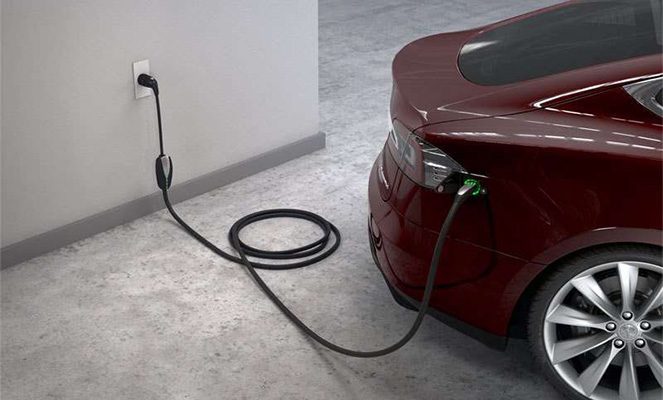
Where and how to charge an electric car?
Content
If you have an electric car or are looking to buy one, charging is probably one of your biggest concerns. Recharge at home, in the condominium, in the office or on the road, discover all the solutions for recharging your electric vehicle.
Charge your electric car at home
Charge your electric car at home turns out to be the most practical and economical option in everyday life. Really, electric car charging occurs most of the time at night during off-peak hours, at long intervals, and at latency. Installation home charging stationRegardless of whether you are in a cabin or in a condominium, you no longer need to "refuel"! All you have to do is get into the habit of plugging your EV every time you get home.
Charge your electric vehicle from a household outlet
When buying an electric vehicle, cables that allow recharging the car from a household outlet standard are provided. These electrical cables can be used to charge your vehicle on a daily basis.
Charging from a 2.2 kW household outlet takes longer than from a charging station. Indeed, cables voluntarily limit amperage to 8A or 10A. For Fully charge your electric vehicle via a reinforced Green'Up electrical socket.
This solution, while more economical, requires that its electrical installation be checked by a professional to avoid any risk of overheating.
For charging an electric vehicle from household outletstype E cord is usually provided by the manufacturer when purchasing the vehicle. To learn more about the different types of charging cords and how to use them, you can read our dedicated article on this topic.
Place a charging station or wall box in the parking space.
Recharging in the pavilion is very simple. You can directly plug your electric vehicle into a household outlet or call an electrician to install charging station (also called a wall box) in your garage.
If you live in a condominium, this process can be a little tricky. It is possible to install a charging station using the right to the outlet. This option involves connecting the charging station to a meter in the common areas of your home. You can also opt for a shared and scalable charging solution like the one offered by Zeplug. This solution is more suitable for the specifics of apartment buildings. With a dedicated power supply and a new delivery point installed at its own expense, Zeplug offers you a turnkey charging solution, free for your condominium and without any management for your property manager.
Note. The delivery point is used by ENEDIS to accurately identify the local meter in the distribution network. Zeplug takes care of its creation with the network manager and therefore the internal procedures.
Check out our tips for setting up a charging station in your condominium.
Recharge your electric car with the company
Like a home, a workplace is one of the places where a car stays parked the longest. If you do not have parking at home or you have not installed a charger, use charging station in the car park of your company so it might be a viable alternative. Moreover, since 2010, obligations have been introduced to equip service parking lots. Then these provisions were strengthened by the decree of July 13, 2016 No.1 and the Mobility Act.
For existing buildings for tertiary use the building permit was filed before 1er January 2012, with closed and covered parking for employees, charging point equipment must be provided for2 :
– 10% of parking spaces with more than 20 spaces in urban areas with more than 50 inhabitants
– 5% of parking spaces with more than 40 spaces otherwise
For new buildings for tertiary or industrial use, the company must plan pre-equipment, i.e. connections required to set up a charging point,3 :
– 10% of parking spaces when parking less than 40 cars
– 20% of parking spaces when parking more than 40 cars
In addition, installations in excess of these legal obligations can benefit from the ADVENIR program and 40% of the funding. Talk to your employer!
Please note that new commercial buildings for which building permits will be submitted after March 21, 2021 will need to pre-equip all of their parking spaces.
Charge your electric vehicle on the motorway and on public roads
As mentioned in the introduction, the number of charging points on public roads is increasing. There are currently about 29 public charging stations in France. While charging at public terminals is often more expensive, it is a good backup solution when traveling or on long trips.
For long distance travel, net fast charging stations on highways available in France... These quick charging stations allow vehicles compatible with these charging features to charge 80% of the battery in less than 30 minutes. At the moment, they are mainly operated by Izivia (formerly Sodetrel, a subsidiary of EDF, terminals are accessible by pass), Ionity, Tesla (free access is reserved for Tesla owners), as well as some gas stations and supermarkets. The joint venture Ionity, created in 2017 by manufacturers BMW, Mercedes-Benz, Ford, Audi, Porsche and Volkswagen, is also developing 1er a network of ultra-fast charging stations (350 kW) in Europe. By the end of 400, 2020 charging points are planned, including 80 in France, and the network already has 225 charging points across Europe. As of the end of 2019, more than 40 ultra-fast charging stations had already been installed in France. As for Izivia, at the beginning of 2020, the network had about 200 charging stations available throughout France. However, due to a technical problem, this network is now limited to about forty terminals.
To find working charging stations, you can go to the Chargemap website, which lists all publicly available charging stations.
For a surcharge in the citythere are many charging operators. Although the price of the first hour of charging is in principle attractive, subsequent hours often become more expensive. These terminals are usually accessible with a badge issued by each operator. To avoid the increase in badges and subscriptions, several players have created passes that give access to a set of charging networks. This is what Zeplug offers with its badge, which gives you access to a network of 125 charging stations across Europe, including 000 in France when you travel.
Recharging in public places
Finally, keep in mind that more and more hotels, restaurants and shopping centers are equipping their car parks with charging stations. They are also subject to pre-equipment and tertiary equipment regulations. Recharging there is usually free as part of a customer acquisition strategy. Tesla also rolled out a destination charging program and provided its customers with a map of locations equipped with its charging stations.
Top up your account by renting a place in a private car park.
Today it is also possible to rent parking spaces equipped or equipped with a charging station for electric vehicles. Indeed, with the consent of your landlord, it is entirely possible to install a charging station at the location you are renting. If you don't have parking, this solution can be very beneficial! Sites such as Yespark allow, in particular, to rent a parking space for a month in a residential building. Yespark provides you with over 35 parking spaces in 000 car parks throughout France. You have the option of choosing car parks that are already equipped with electrical outlets. If you do not have a car park equipped with charging stations, you can also send your request directly to Yespark to see if the Zeplug charging service is available at your chosen car park. Thus, this solution makes it easy to find a parking space to charge the electric vehicle at its own charging station.
Finally, if you are looking for a place to park your electric vehicle, do not hesitate to contact us directly so we can support you in the process!
Thus, whether at home, at work or on the road, you should always find where to charge your electric car !
1 Order of July 13, 2016 on the application of Articles Р111-14-2 to Р111-14-5 of the Building and Housing Code.
2 Article R136-1 of the Building and Housing Code
3 Article R111-14-3 of the Building and Housing Code.

